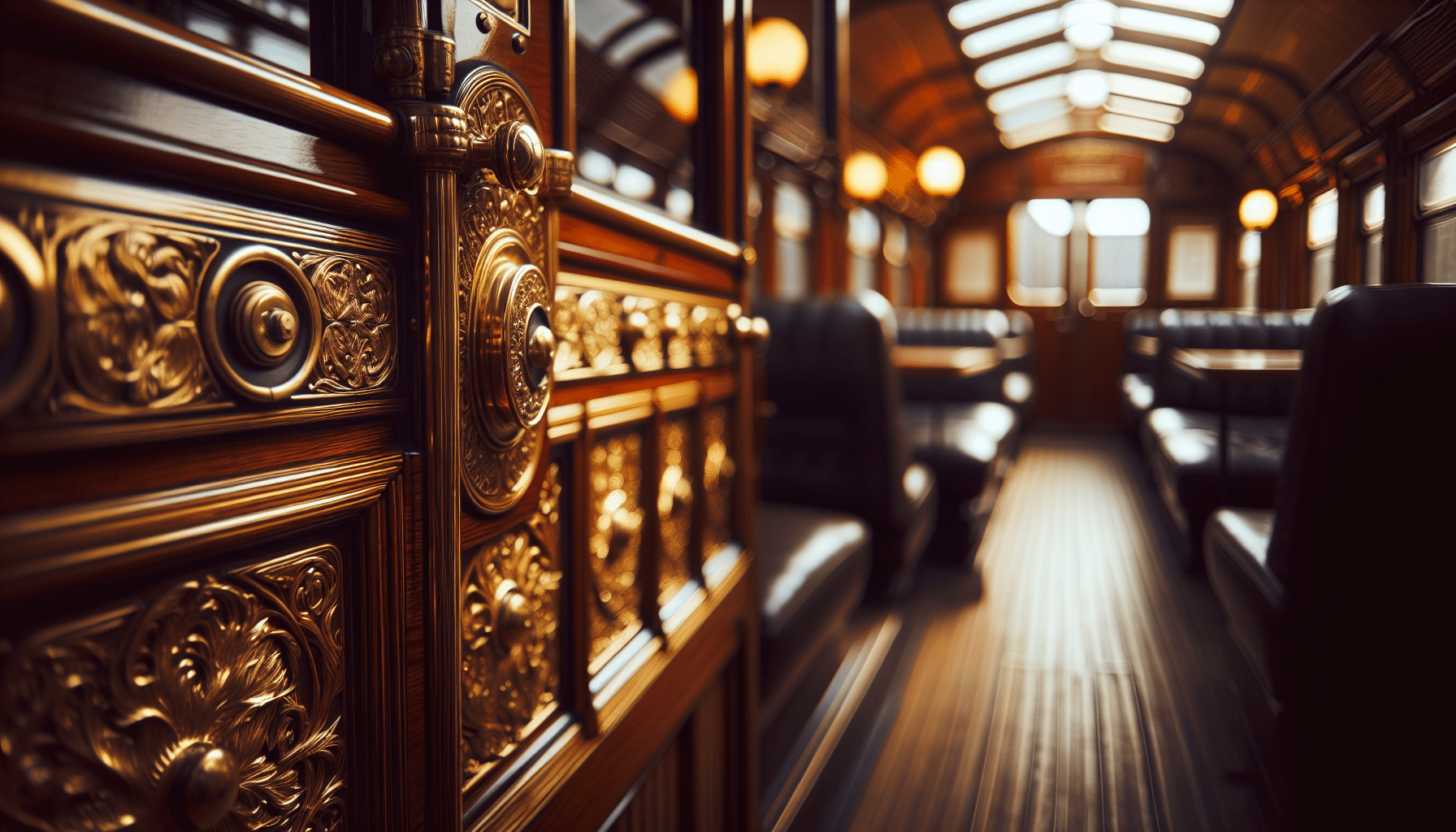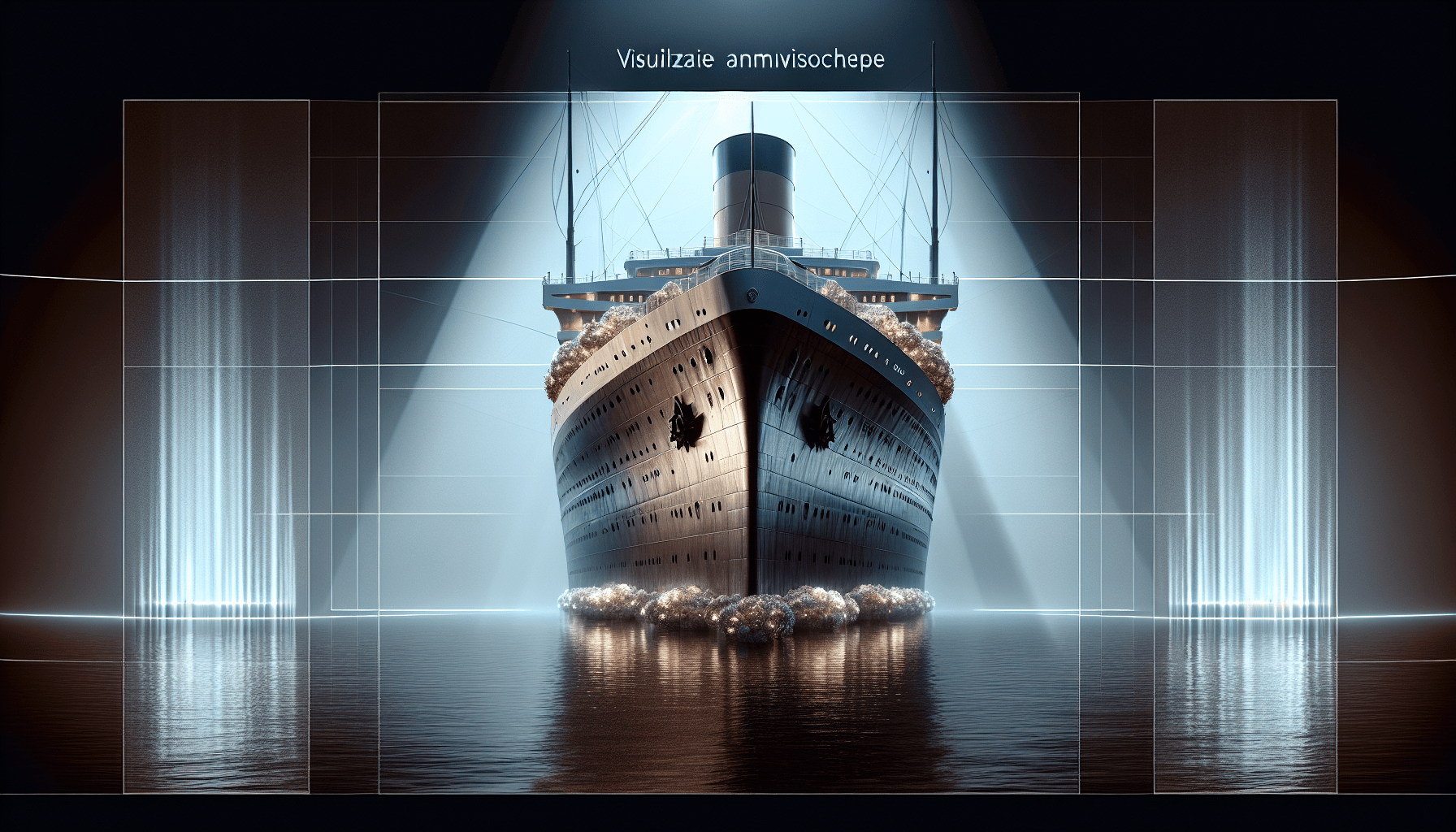Nestled in the heart of Los Angeles, the Angel’s Flight Railway stands tall as a testament to a bygone era. This iconic railway, etched into the fabric of the city, has witnessed generations of visitors marvel at its charm. As one steps onto the historic cars, they are transported to a time when bustling streets and towering buildings were yet to dominate the cityscape. Offering enchanting views and a sense of nostalgia, the Angel’s Flight Railway continues to captivate all those who embark on its short but memorable journey.
History of Angel’s Flight Railway
Origins and construction
The history of Angel’s Flight Railway dates back to the early 1900s when it was first conceptualized as a practical transportation solution for residents and workers in the vibrant cultural hub of Bunker Hill in Los Angeles. Designed by Colonel James Ward Eddy and engineer Robert W. Moore, the railway aimed to connect the steep gradient between Hill Street and Olive Street, which presented a significant challenge for pedestrians navigating the area. Construction began in 1901, and within a year, the iconic funicular was ready for operation.
Early years of operation
When it opened on New Year’s Eve in 1901, Angel’s Flight Railway quickly became a beloved fixture of the city. The two distinctive orange cars, named Sinai and Olivet, with their polished wood panels and brass fittings, provided a nostalgic glimpse into the past. The railway acted as a vital link for locals, transporting them between the prestigious Victorian mansions atop Bunker Hill and the bustling business district below. The modest fare of just one cent per ride made it accessible for all, and it soon became an essential part of daily life for Angelenos.
Closure and restoration
Sadly, the operation of Angel’s Flight Railway hit a roadblock in the mid-20th century. In 1969, the entire Bunker Hill area underwent a massive urban regeneration project, resulting in the demolition of numerous historical buildings, including the Victorian houses surrounding the railway. As a consequence, the railway was deemed redundant and ceased operations in 1969. However, recognizing its cultural significance, preservation efforts were initiated, and in 1996, after a lengthy restoration process, Angel’s Flight Railway was reopened to the public, restored to its former glory.
Facts and Features of Angel’s Flight Railway
Location and layout
Angel’s Flight Railway is situated in Downtown Los Angeles, connecting Hill Street and Olive Street. The railway is composed of two separate funicular railways, which run on parallel tracks. These tracks ascend at an incline of 33 degrees, covering a vertical distance of 298 feet. The small footprint of the railway makes it an architectural marvel, fitting seamlessly within the urban landscape.
Railway cars and technology
The railway cars themselves are a testament to early 20th-century craftsmanship. Sinai and Olivet, the two cars, are powered by a cable system that runs through an underground tunnel, driven by an electric motor. Each car can accommodate up to 40 passengers and offers breathtaking views of downtown Los Angeles as it ascends the hill. The cars are meticulously maintained, ensuring a safe and enjoyable experience for all riders.
Length and duration
The total length of the railway is just under 300 feet, making it one of the shortest railways in the world. Despite its brevity, the experience is memorable, as the journey takes passengers from the busy streets below to the serene ambiance of the hilltop, all within a span of less than a minute. The ride offers a quick escape from the hustle and bustle of the city, allowing riders to take a moment to appreciate the surrounding beauty.
Operator and ticketing
Currently, Angel’s Flight Railway is operated by the Angels Flight Railway Foundation, a non-profit organization dedicated to preserving and showcasing the historical significance of the railway. The foundation oversees the day-to-day operations of the railway, ensuring that it remains a cherished part of Los Angeles’ cultural heritage. Tickets can be purchased at the base of the railway, and visitors have the option of buying single-ride fares or discounted day passes, allowing them to experience the railway multiple times during their visit.
Significance and Cultural Impact
Famous film and TV appearances
Over the years, Angel’s Flight Railway has made numerous appearances in popular film and television productions, firmly establishing itself as an iconic Los Angeles landmark. One notable example is its inclusion in the 1944 film “Double Indemnity,” where it serves as a backdrop for a pivotal scene. The railway has also graced the screen in more contemporary movies such as “500 Days of Summer” and “La La Land,” further solidifying its status as a cinematic symbol of the city.
Artistic and literary references
Beyond its on-screen fame, Angel’s Flight Railway has inspired countless artists and writers. From evocative photographs showcasing the railway’s unique charm to poems and novels capturing the essence of the city’s history, the railway has left an indelible mark on artistic expression. Its picturesque setting and connection to the bygone era of early 20th-century Los Angeles make it a subject of fascination for creatives seeking to capture the essence of the city’s rich cultural tapestry.
Iconic status and symbolism
Angel’s Flight Railway has become a symbol of resilience and preservation in the face of urban renewal. Its closure in the late 1960s galvanized the community and led to the formation of organizations dedicated to its restoration. The reopening in 1996 marked not only the triumph of historical preservation but also the enduring spirit of the city itself. Today, the railway stands as a testament to the intrinsic value of retaining cultural landmarks and serves as a source of pride for the citizens of Los Angeles.
Angel’s Flight Railway in Popular Culture
Movies featuring Angel’s Flight
Angel’s Flight Railway has enjoyed significant exposure in the world of cinema. Its appearance in movies such as “500 Days of Summer” and “La La Land” has magnified its popularity and drawn attention to its historical significance. Filmmakers are often drawn to the railway’s nostalgic charm and the unique visual appeal it brings to their storytelling.
TV shows highlighting the railway
The cultural impact of Angel’s Flight Railway extends to the realm of television as well. The railway has made appearances in popular shows like “Mad Men” and “Perry Mason,” further cementing its status as a recognizable and iconic Los Angeles landmark. The inclusion of the railway in these series adds an air of authenticity and nostalgia, transporting viewers back in time to a bygone era.
Songs and music videos
The allure of Angel’s Flight Railway has even extended into the realm of music. Numerous songs and music videos have incorporated the railway into their narratives, using its nostalgic appeal to evoke a sense of longing and romanticism. From the iconic music video for “City of Angels” by Thirty Seconds to Mars to the song “Angel’s Flight” by Los Angeles-based band Pasadena Napalm Division, the railway has captured the imagination of musicians across a range of genres.
Current Status and Operation
Reopening and rehabilitation
Since its restoration in 1996, Angel’s Flight Railway has operated consistently, providing locals and visitors with an opportunity to experience a piece of Los Angeles history. Today, the railway stands as a testament to the dedication and hard work of preservationists who fought to ensure its survival. Regular maintenance and rehabilitation efforts are undertaken to guarantee the safety and longevity of this beloved cultural icon.
Safety measures and regulations
The Angels Flight Railway Foundation prioritizes the safety of its passengers and adheres to stringent safety regulations. Regular inspections of the railway and its tracks are conducted to identify and address any potential issues. The railway cars are equipped with modern safety features and are continuously monitored during operation. Visitors can feel confident that their journey on Angel’s Flight Railway is not only enjoyable but also secure.
Operating hours and facilities
Angel’s Flight Railway operates daily, providing visitors with a unique and memorable experience from morning until evening. The first ride commences at the start of the day, allowing early risers to enjoy a peaceful journey up the hill, while the last ride of the day offers riders a chance to marvel at the city’s beautiful lights below. At the base of the railway, visitors will find a visitor center, informational displays, and amenities to enhance their overall experience.
Experiencing Angel’s Flight Railway
Ticket pricing and options
Experiencing Angel’s Flight Railway is a must for anyone visiting Los Angeles. Tickets are affordably priced, with single-ride fares available for a nominal fee. For those who wish to enjoy multiple rides or have a more immersive experience, discounted day passes are available. Visitors are encouraged to check the official website for the most up-to-date pricing information.
Tips for a memorable ride
To ensure a truly memorable ride on Angel’s Flight Railway, it is recommended to visit during the quieter hours, when the railway may be less crowded. This allows for a more intimate experience, allowing visitors to fully immerse themselves in the charm and beauty of the journey. Additionally, it is advisable to bring a camera to capture the stunning views offered from the railway cars.
Nearby attractions and sights
Angel’s Flight Railway is conveniently located near several popular attractions and sights in Los Angeles. After enjoying the unique experience of riding the railway, visitors can explore the vibrant streets of downtown, discovering the city’s diverse culinary offerings and cultural landmarks. Nearby attractions such as the Museum of Contemporary Art and Grand Park provide further opportunities for exploration and discovery, making a visit to Angel’s Flight Railway a perfect addition to a day of sightseeing in Los Angeles.
Historical Significance of Bunker Hill
Development and transformation
Bunker Hill, the neighborhood surrounding Angel’s Flight Railway, has a rich history that extends far beyond the railway itself. Originally inhabited by wealthy residents in the late 19th century, Bunker Hill experienced significant development and urban transformation over the years. The construction of grand Victorian mansions and the influx of prominent citizens turned the area into one of the most desirable addresses in Los Angeles.
Demolition and urban renewal
In the mid-20th century, Bunker Hill underwent a period of extensive urban renewal. Many of the grand homes and historic buildings were demolished to make way for modern high-rise developments. The architectural heritage of the area was nearly lost, as entire blocks were razed to create space for commercial buildings and governmental institutions. Angel’s Flight Railway, luckily, survived this period of demolition, standing as a poignant reminder of the neighborhood’s past.
Preservation efforts
Recognizing the historical significance of Bunker Hill and the threats posed by urban renewal, a movement for preservation emerged in the late 1960s. Individuals and organizations rallied together to save the remaining Victorian homes and advocate for the restoration of the neighborhood’s cultural heritage. Angel’s Flight Railway became a focal point of these efforts, with its closure driving the community to take action to ensure its survival. The restoration and reopening of the railway in 1996 marked a triumphant victory for preservationists and symbolized the preservation and revitalization of Bunker Hill as a whole.
Angel’s Flight Railway: An Architectural Marvel
Unique features of the design
Angel’s Flight Railway’s design is truly unique and adds to its charm and allure. The railway’s incline and vertical ascent are a remarkable achievement, allowing passengers to traverse the steep slope between Hill Street and Olive Street with ease. The vintage wooden cars, with their beautifully crafted interiors, evoke a sense of nostalgia and transport riders back in time. The compactness of the railway within the city landscape also adds to its architectural intrigue and sets it apart from other transportation landmarks.
Architectural influences
Angel’s Flight Railway draws inspiration from various architectural styles prevalent in the early 20th century. The Victorian era influenced the design of the surrounding houses, while the railway’s infrastructure showcases elements of the Beaux-Arts architectural style. This eclectic mix of influences creates a harmonious blend of aesthetics, representative of the historical and cultural significance associated with the railway and Bunker Hill as a whole.
Restoration and architectural appreciation
The restoration of Angel’s Flight Railway was a comprehensive process, ensuring that the architectural integrity of the railway was upheld while incorporating modern safety measures. The woodwork, metalwork, and intricate detailing of the railway cars were meticulously restored, allowing visitors to appreciate the craftsmanship and architectural beauty of the early 20th century. The railway’s restoration serves as a testament to the importance of architectural preservation and showcases the dedication of those involved in its revival.
Angel’s Flight Railway and Urban Transportation
Early role in commuter transit
Angel’s Flight Railway played a vital role in the early days of urban transportation in Los Angeles. It provided a convenient and affordable means of travel for workers commuting between the business district and the residential neighborhoods on Bunker Hill. The railway’s operation offered an efficient alternative to the steep climb up the hill and reduced travel times for those going to and from work.
Current implications for transportation
While no longer a primary mode of transportation, Angel’s Flight Railway continues to serve as a living testament to Los Angeles’ rich transportation history. It offers visitors and locals a nostalgic journey that harkens back to a time when streetcars and railways formed the backbone of the city’s transportation infrastructure. As Los Angeles continues to evolve its transportation network, the existence of Angel’s Flight Railway acts as a reminder of the city’s heritage and the importance of preserving its transportation legacy.
Integration with other modes of transport
Angel’s Flight Railway has become more than just a standalone attraction; it has also integrated seamlessly with other modes of transportation in Los Angeles. The railway’s location near the Metro station and bus stops allows visitors to easily combine their ride on Angel’s Flight with other forms of public transportation, creating a seamless multi-modal experience. This integration showcases the versatility and adaptability of the railway, ensuring that it remains relevant in the modern urban landscape.
Future Plans and Expansion
Proposed extensions and improvements
As the demand for accessible and sustainable transportation grows in Los Angeles, there have been proposals for expanding and improving Angel’s Flight Railway. One of the ideas put forward includes extending the railway tracks to connect with other parts of downtown, creating a more comprehensive and interconnected transportation network. Improved accessibility for individuals with disabilities and enhanced safety measures are also key considerations in any potential future plans.
Community support and debates
The proposed extensions and improvements to Angel’s Flight Railway have generated robust discussions within the community. Supporters of the upgrades emphasize the potential for increased connectivity and improved transportation options, while others caution against altering the railway’s historical integrity. These debates highlight the importance of community involvement in shaping the future of this cultural icon and ensure that any potential changes align with the preservation and celebration of Los Angeles’ unique heritage.
Sustainability considerations
As urban centers continue to prioritize sustainable transportation options, discussions around the environmental impact of Angel’s Flight Railway have emerged. Proponents of the railway argue that its use of electricity, coupled with its short journey duration, makes it an inherently sustainable mode of transportation. Others argue for the integration of alternative energy sources such as solar power or the exploration of modern, eco-friendly materials in any potential expansion or improvement plans. These considerations ensure that the railway remains in step with the evolving sustainability goals of Los Angeles and contributes to a greener future for urban transportation.
In conclusion, the history, significance, and cultural impact of Angel’s Flight Railway make it a truly unique and beloved piece of Los Angeles’ rich tapestry. From its origins as a practical transportation solution to its closure and subsequent restoration, the railway stands as a symbol of resilience and preservation. Its appearance in films, television shows, and music videos further solidifies its status as an iconic landmark. Operating daily, Angel’s Flight Railway continues to offer memorable experiences to visitors and locals alike. From its architectural marvel to its role in urban transportation, it embodies the past, present, and future of Los Angeles, reminding us of the city’s vibrant history and ongoing evolution.
Looking for Sightseeing Tours?








